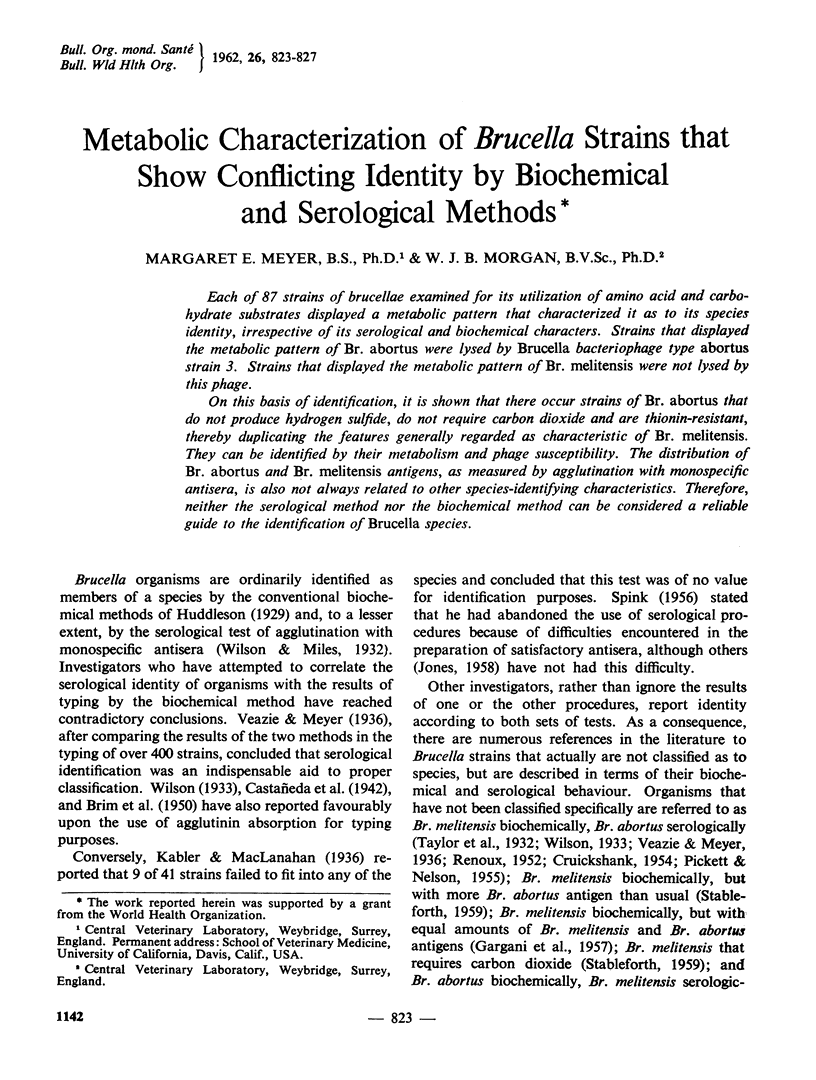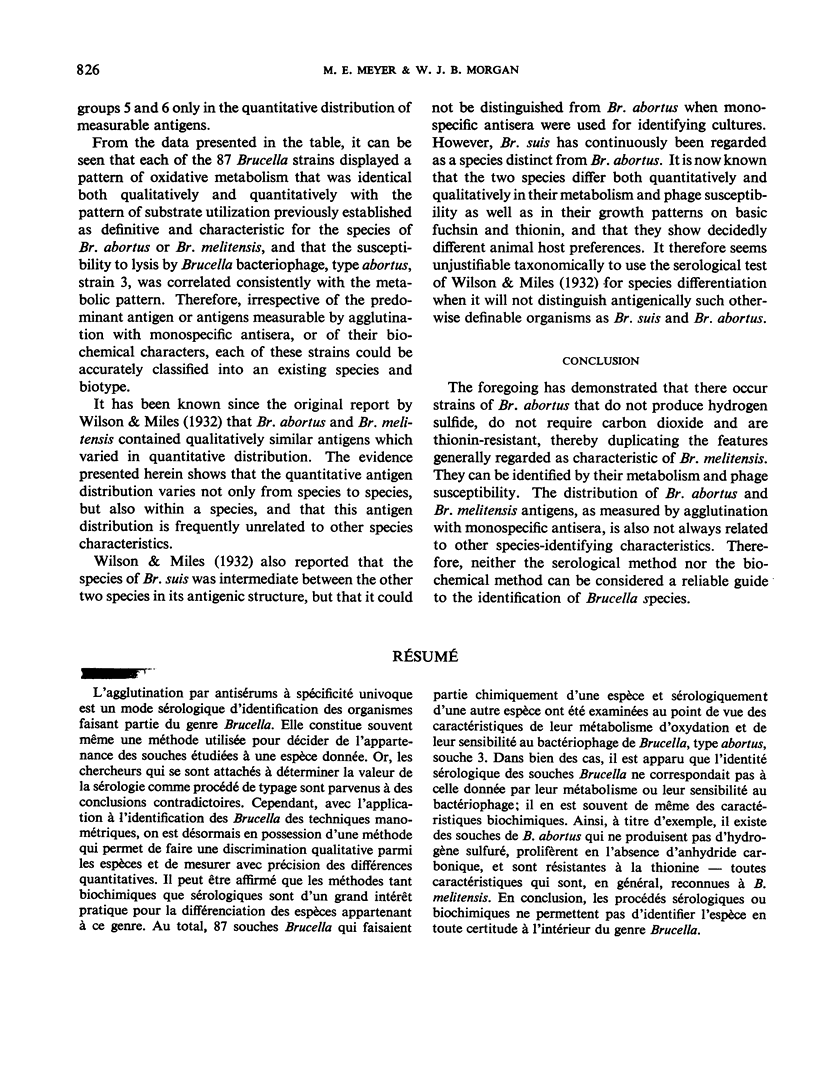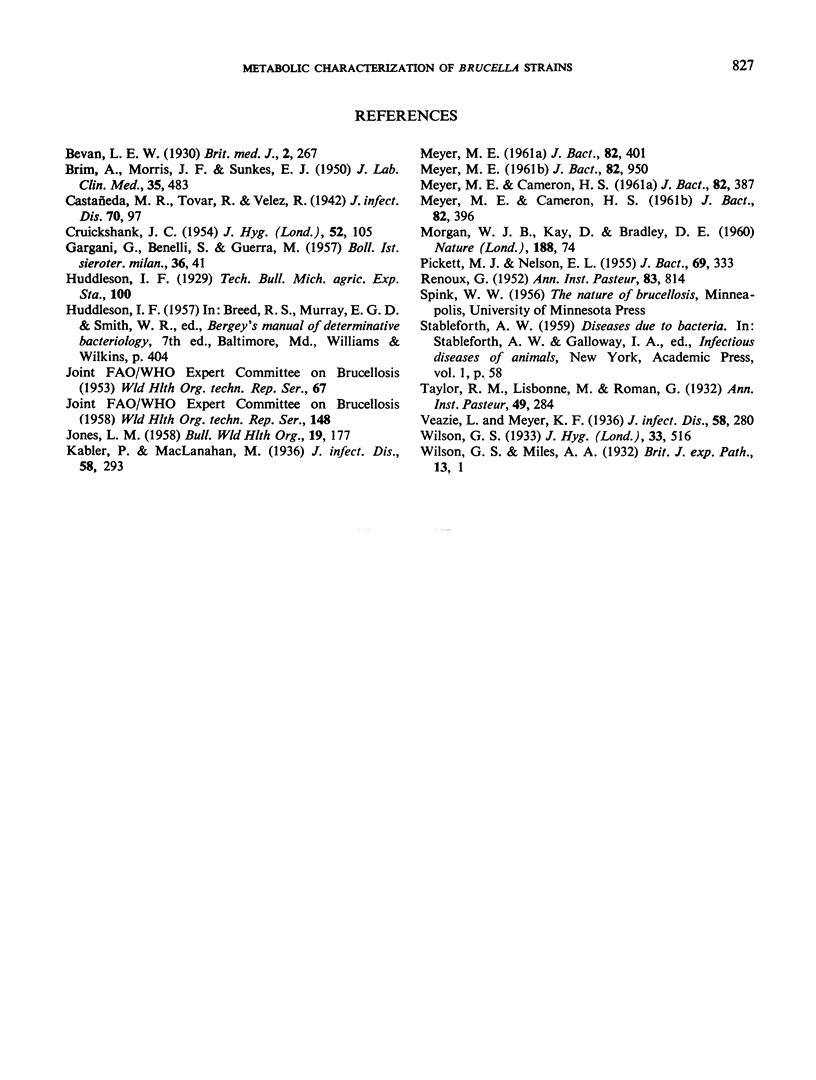Abstract
Each of 87 strains of brucellae examined for its utilization of amino acid and carbohydrate substrates displayed a metabolic pattern that characterized it as to its species identity, irrespective of its serological and biochemical characters. Strains that displayed the metabolic pattern of Br. abortus were lysed by Brucella bacteriophage type abortus strain 3. Strains that displayed the metabolic pattern of Br. melitensis were not lysed by this phage.
On this basis of identification, it is shown that there occur strains of Br. abortus that do not produce hydrogen sulfide, do not require carbon dioxide and are thionin-resistant, thereby duplicating the features generally regarded as characteristic of Br. melitensis. They can be identified by their metabolism and phage susceptibility. The distribution of Br. abortus and Br. melitensis antigens, as measured by agglutination with monospecific antisera, is also not always related to other species-identifying characteristics. Therefore, neither the serological method nor the biochemical method can be considered a reliable guide to the identification of Brucella species.
Full text
PDF




Selected References
These references are in PubMed. This may not be the complete list of references from this article.
- CRUICKSHANK J. C., MADGE B. Observations on brucella species based on the examination of 800 strains. J Hyg (Lond) 1954 Mar;52(1):105–118. doi: 10.1017/s0022172400027303. [DOI] [PMC free article] [PubMed] [Google Scholar]
- MEYER M. E., CAMERON H. S. Metabolic characterization of the genus Brucella. I. Statistical evaluation of the oxidative rates by which type I of each species can be identified. J Bacteriol. 1961 Sep;82:387–395. doi: 10.1128/jb.82.3.387-395.1961. [DOI] [PMC free article] [PubMed] [Google Scholar]
- MEYER M. E., CAMERON H. S. Metabolic characterization of the genus Brucella. II. Oxidative metabolic patterns of the described biotypes. J Bacteriol. 1961 Sep;82:396–400. doi: 10.1128/jb.82.3.396-400.1961. [DOI] [PMC free article] [PubMed] [Google Scholar]
- MEYER M. E. Metabolic characterization of the genus Brucella. III. Oxidative metabolism of strains that show anomalous characteristics by conventional determinative methods. J Bacteriol. 1961 Sep;82:401–410. doi: 10.1128/jb.82.3.401-410.1961. [DOI] [PMC free article] [PubMed] [Google Scholar]
- Meyer M. E. METABOLIC CHARACTERIZATION OF THE GENUS BRUCELLA IV. 3: Correlation of Oxidative Metabolic Patterns and Susceptibility to Brucella Bacteriophage, Type abortus, Strain. J Bacteriol. 1961 Dec;82(6):950–953. doi: 10.1128/jb.82.6.950-953.1961. [DOI] [PMC free article] [PubMed] [Google Scholar]
- PICKETT M. J., NELSON E. L. Speciation within the genus Brucella. IV. Fermentation of carbohydrates. J Bacteriol. 1955 Mar;69(3):333–336. doi: 10.1128/jb.69.3.333-336.1955. [DOI] [PMC free article] [PubMed] [Google Scholar]
- RENOUX G. Une nouvelle espèce de Brucella: Br. intermedia. Ann Inst Pasteur (Paris) 1952 Dec;83(6):814–815. [PubMed] [Google Scholar]


